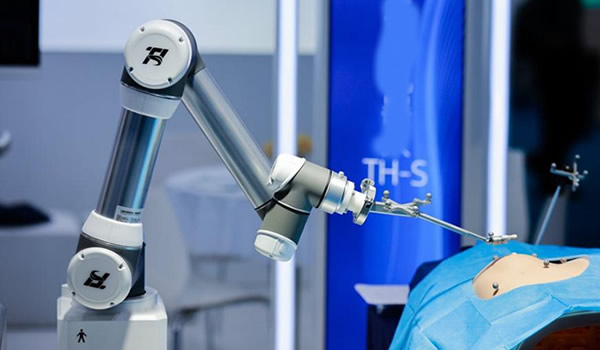Lung cancer is the leading cause of cancer deaths in Asia, driven by smoking, air pollution, and genetic factors. While surgery, chemotherapy, and radiation remain central, targeted therapy and immunotherapy are revolutionizing outcomes. This article explores lung cancer treatments in Asia, including regional disparities, new drugs, and future innovations.

Lung Cancer in Asia: The Burden
- Global impact: More than 2.2 million new cases annually, with Asia accounting for over half.
- Regional burden: China: Largest lung cancer population worldwide. India: Rising incidence, often diagnosed late. Japan & South Korea: High detection rates and access to advanced therapies.
- Risk factors: Smoking prevalence remains high in China, Indonesia, and Vietnam. Air pollution major contributor in India and China. Genetic susceptibility: EGFR mutations more common in Asian populations.
Surgery: First-Line for Early-Stage Lung Cancer
- Lobectomy: Removal of a lung lobe, standard procedure.
- Pneumonectomy: Entire lung removal for extensive disease.
- Minimally invasive approaches: Video-assisted thoracic surgery (VATS). Robotic-assisted surgery expanding in Japan, South Korea, and Singapore.
- Challenges in Asia: Limited early detection; many patients present too late for surgery.
Radiation Therapy
- External Beam Radiation Therapy (EBRT): Widely available in urban centers.
- Stereotactic Body Radiotherapy (SBRT): Used for small tumors in patients unfit for surgery.
- Proton Therapy: Available in Japan and South Korea, expanding in China.
- Access gap: Rural and low-income populations lack radiotherapy facilities.
Chemotherapy
- Still essential for both non-small cell lung cancer (NSCLC) and small cell lung cancer (SCLC).
- Platinum-based combinations (cisplatin, carboplatin) form backbone of treatment.
- Increasing use in combination with targeted therapy and immunotherapy.
Targeted Therapy
EGFR Mutations
- More common in Asian populations (30–50% of NSCLC).
- EGFR inhibitors: Erlotinib, gefitinib, osimertinib widely available.
- Japan and South Korea: Strong adoption of next-generation EGFR inhibitors.
ALK and ROS1 Rearrangements
- Targeted by crizotinib, alectinib, ceritinib.
- Expanding access in China and India.
Other Targets
- MET, RET, KRAS targeted drugs under trials across Asia.

Immunotherapy
Immune Checkpoint Inhibitors
- PD-1/PD-L1 inhibitors (nivolumab, pembrolizumab, atezolizumab) used for advanced NSCLC.
- Japan, China, and South Korea: Leading clinical trial sites for immunotherapy.
- India and Southeast Asia: Limited by high costs and lack of insurance coverage.
Combination Therapies
- Immunotherapy combined with chemotherapy improving survival rates.
- Ongoing trials across Asia to expand indications.
Regional Insights
- China: Largest number of lung cancer cases; rapid expansion of targeted drugs and immunotherapy, including domestic biotech innovations.
- India: Limited access to targeted drugs; reliance on generics. Late-stage diagnosis common.
- Japan & South Korea: Advanced treatment infrastructure; strong adoption of precision medicine.
- Southeast Asia: High smoking prevalence; late diagnosis and limited access to advanced therapies.
- Middle East: Rising lung cancer linked to tobacco use and air pollution.
Challenges in Asia
- Late Diagnosis: Over 70% of patients diagnosed at advanced stages.
- High Treatment Costs: Targeted drugs and immunotherapy unaffordable for many.
- Healthcare Gaps: Urban vs rural disparities in access to advanced care.
- Smoking Prevalence: Tobacco control policies inconsistent across Asia.
Future of Lung Cancer Care in Asia
- AI-assisted CT screening for early detection.
- Liquid biopsies for real-time tumor monitoring.
- Expansion of immunotherapy through local biotech and generics.
- Precision oncology programs integrating genomics into routine care.
- Public health campaigns on tobacco and air pollution.

Conclusion
Lung cancer remains a critical health challenge in Asia, but advances in surgery, radiation, chemotherapy, targeted therapy, and immunotherapy are transforming outcomes.
The future depends on early detection, wider access to advanced drugs, and preventive strategies, reducing the enormous burden of lung cancer in the region.
Disclaimer: The information provided in this article is for general informational purposes only and is not intended as medical advice, diagnosis, or treatment.
Always seek the guidance of a qualified healthcare professional with any questions you may have regarding your health or a medical condition.
Never disregard professional medical advice or delay in seeking it because of something you have read on this website.